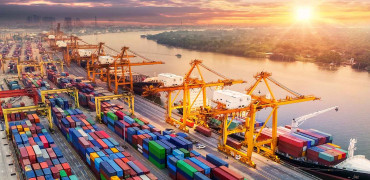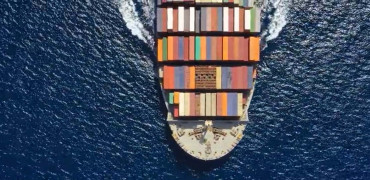As the Big Top comes down on disappointment in Brazil, and the COP circus leaves town once again, Jim McClelland asks: What will success look like for climate action in future.
Beyond football, carnivals and samba, Brazil is also a country known for renewables and rainforests.
So, it is sad to say that that the abiding memories of its term hosting the world’s biggest climate summit might well be some ugly scenes of division, leading to disappointment and failure, plus an actual venue fire.
It was not meant to end like this.
Is it time to adjust our expectations of what COP can and cannot do, in global terms
Chequered recent past
As a long-running series that began some 30 years ago in 1995, in Berlin, the COP show arrived in Belém, Brazil off the back of a couple of decidedly inauspicious episodes.
Taking place in 2023, the 28th meeting of the Conference of the Parties (COP28) was held in Dubai, United Arab Emirates (UAE) — smack bang in the heart of the world’s fossil-fuel industry. Its President, Sultan Al Jaber, was also the Managing Director and Group CEO of the Abu Dhabi National Oil Company. Doubts were raised; questions were asked.
The last-day deliverables, however, served up something of a surprise, in a good way.
The critical wording in the concluding statements actually proved more robust than many had feared, with an agreement reached that committed all parties to "transitioning away from fossil fuels in energy systems, in a just, orderly and equitable manner”.
Bad omens; worse optics
Then, for COP29 last year, the gravy train, or plane, loaded up again with lobbyists and leaders to roll on into Azerbaijan, another place known for its fossil-fuel past. Its Capital, Baku was even home to the world’s first mechanically drilled oil well, way back in 1846.
This time around, the big 11th-hour deal revolved more around finance, than emissions.
The Baku Climate Unity Pact pledged at least $300 billion a year to help developing nations manage and mitigate the impacts of climate change. Whilst this sum tripled the previous promise, it fell well short of the $1.3 trillion many had wanted and expected.
Overall, once more, optics were poor; and omens got worse. On the eve of the event came news of the re-election of climate-denier Donald Trump for a second term as US President.
Talk about the luck, or look, of the COP — either way it was bad. So, what hope 2025?
Absent friends, or foes
Well, bringing COP30 to the country with the most renewables in all the G20 was a start. Being host to 60% of the Amazon rainforest was another unique selling point in its favour. On paper therefore, Brazil was a very different prospect — cleaner, greener and keener.
The advance list of delegations registered to attend numbered some 193 countries in total, plus the European Union, but highlighted one glaring exception: no official representatives from the US administration made the trip, this year — the White House stayed home.
In this, though, the COP was not alone. The US President was also missing from the annual G20 summit also taking place the same month in Johannesburg, South Africa.
Back in January, he chose not to attend the World Economic Forum in Davos in person, either — electing merely to provide a virtual address. Recent reports, however, suggest he could appear in the flesh in 2026, subject to ‘woke’ topics being strictly off the agenda.
Trump’s no-show was no surprise, of course. Having campaigned on a pledge to pull out of the Paris Agreement, the President had long-laid his COP-out cards on the table.
In truth, whether his absence would really help or hinder negotiations remained to be seen. As things turned out in Belém, a want-away US was not the COP’s only problem.
Limp leaders and vested interests have sadly proved widespread
COP of many COPs, and culprits
The COP is a house divided. In fact, it is really not one, but multiple, conflicting COPs.
There is one COP for Northern-hemisphere nations, and another for the Global South; one for the G20 landed gentry, and another for Small Island Developing States (SIDS); plus, most importantly, there is one for oil-rich obstructionists, and another for everyone else.
To be fair, not all obstructionists burn oil alone — culprit countries run on coal and gas, too.
In the end, the marathon debate stumbled to-and-fro towards a conspicuous lack of conclusion and unity, despite the valiant efforts of significant numbers of nations.
More than 80 countries could be seen actively calling for a phase-out (rather than a phase-down) of fossil fuels; led by Colombia, over 30 directly opposed the initial draft agreement because of a lack of roadmap for fossil-fuel phase-out. Ultimately, their efforts were in vain.
The disappointing final draft dropped all mention of fossil fuels, beyond referring back to COP28. Ironically, the much-heralded Amazonian COP failed to deliver on forests, too.
Some responsibility for the corrosive division and breakdown in dialogue has been placed on an apparent disconnect between the expectations and aspirations of the two Presidents involved: Brazil’s blue-sky eco champion President Luiz Inácio Lula da Silva; and pragmatic consensus-building COP President André Corrêa do Lago.
Had the final result been different, their roles would likely have been recast as a classic tag-team duo — with one the visionary architect, the other the implementation engineer.
Frankly, the blame game is unfair on all the Presidents, Luiz, Corrêa do Lago, even Trump. The failure is not exclusively theirs alone. If not exactly everywhere, the reality is that limp leaders and vested interests have sadly proved widespread — they make for a toxic mix.
Black carbon, BAM, timber building
That said, a reductive hit-or-miss headline is not the only measure of COP success.
Numerous specific, subsidiary and ancillary targets did get agreed. These address a range of key issues that arguably would never have been tackled at such speed or scale, or maybe even at all, without the world stage afforded them by the COP programme.
Delivering wins of sorts for policymakers, businesses and activists alike, outcomes include:
- A first-of-its kind commitment to cut black carbon, a super pollutant;
- The No Organic Waste (NOW) Plan to reduce certain methane emissions 30% by 2030;
- Formal recognition by the Government of Brazil for demarcation of 10 Indigenous lands;
- Progress on human rights via the Belém Action Mechanism (BAM) for a Just Transition;
- Announcement of a Belém Gender Action Plan, despite disagreements over definitions;
- Large-scale backing from both governments and industry for a Building for Forests Acceleration Plan, launched under the Principles for Responsible Timber Construction.
Reframe and refocus for the future
Individual achievements aside, though, as a vehicle for global consensus, COP is broken.
Prospects of less infighting going forward are not helped by the fact the next stop on tour will see COP31 take place in Türkiye, albeit with support from Australia and the Pacific.
Antalya has stepped up as host, but in a country that literally straddles continents East and West, it is hard not to foresee geopolitical tensions playing a significant role there, too.
Türkiye is also a country heavily reliant on natural gas, with investments on the rise.
So, it is time to adjust our expectations of what COP can and cannot do, in global terms.
Let’s be honest, when it comes to world politics and international policymaking, climate change is a common problem, but not one with a shared solution, it now seems.
This is not the death of hope. There will be many reasons to celebrate climate action, with an increasing number and diversity of actors participating and contributing — from community initiatives to financial institutions, and clean-tech startups to local councils.
It is simply a matter of reframing and refocusing; success will look different in future.
Jim McClelland is a sustainable futurist, editor, journalist and speaker




